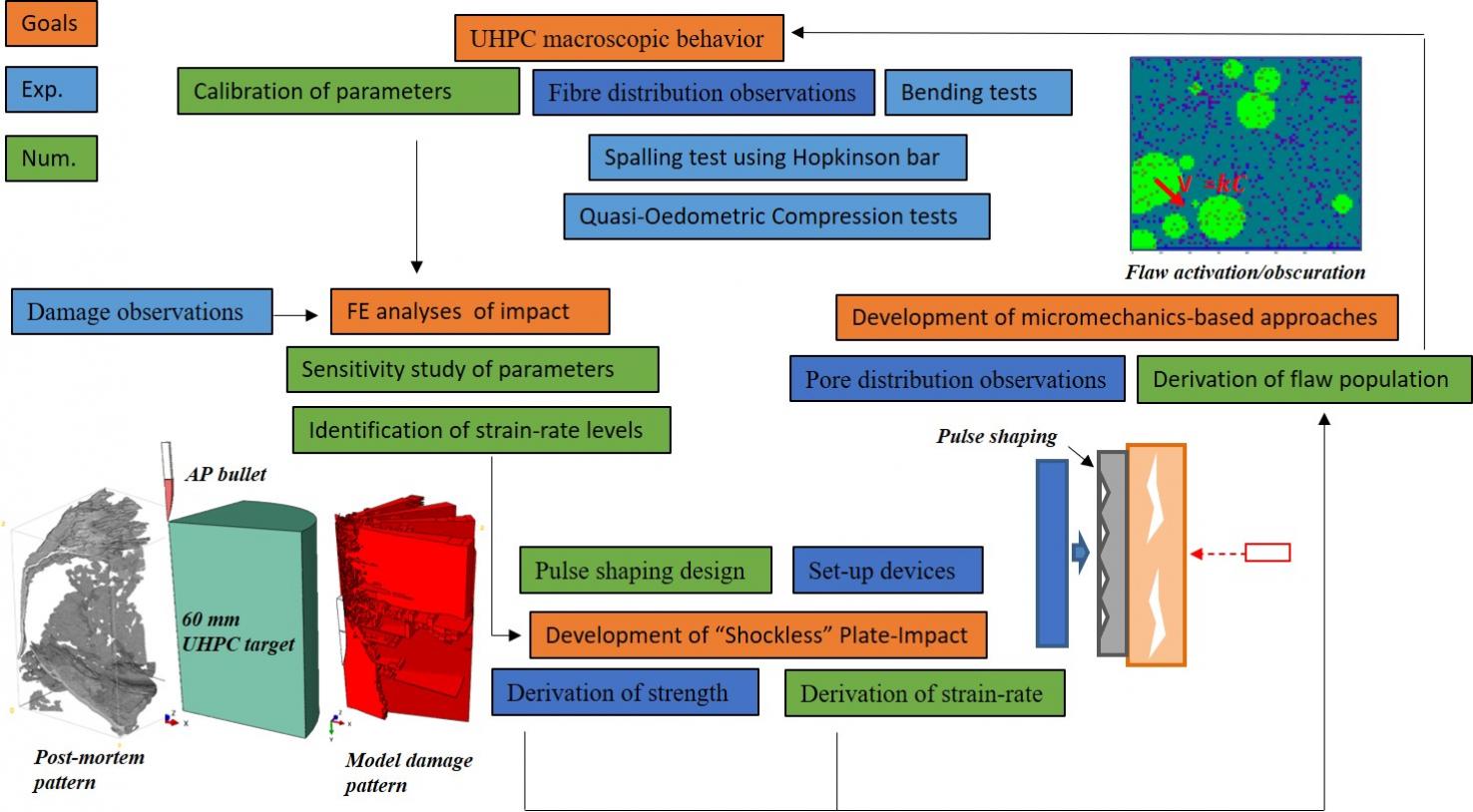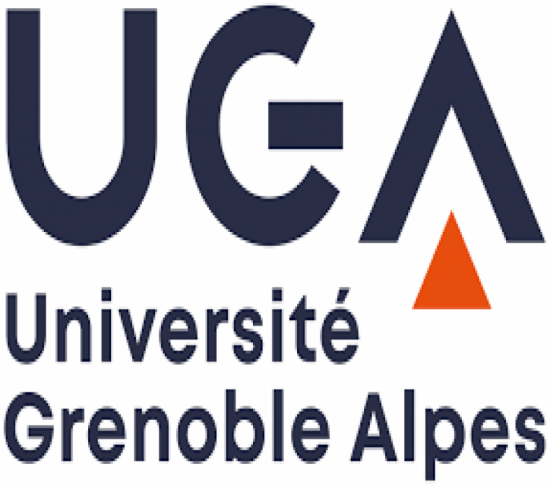- Imprimer
- Partager
- Partager sur Facebook
- Partager sur X
- Partager sur LinkedIn
Soutenance
Le 24 mars 2021
Grenoble - Presqu'île

Experimental testing and numerical modelling of the tensile and compression damage in Ultra-High Performance Concrete under impact loading
This thesis presents experimental and numerical investigations on Ultra-High Performance Concretes (UHPC) in view of intensifying their use in application demanding resistance to impact loadings. Under impact, concrete is exposed to high confinement stresses and high tensile loading rates, leading to severe damage modes affecting the ballistic performance. The DFHcoh-KST coupled model, describing the behavior under both confinement and dynamic tension, has been chosen to simulate with a Finite Element (FE) code the response of UHPC targets with fibre reinforcement under impact. In the model, the confining pressure is influencing the volumetric strain and the deviatoric strength. The strain rate effects are included in the description of the tensile damage based on the activation and obscuration of a Weibull distribution of flaws. The role of the fibres is integrated introducing a cohesion strength term.
The material parameters were identified for two Ductal® formulations using existing experimental techniques (Quasi-Oedometric Compression (Q-OC) tests, bending tests, and spalling tests at the Hopkinson bar) covering confinement pressure up to 500 MPa and a range of strain rates from 10-5 to 102 s−1. The validity domain of the proposed model was extended at very-high strain rates (above 103 s−1) by performing additional plate-impact tests, investigating the tensile response. A new testing technique employing a pulse shaping system to ensure a constant loading rate in the specimen was designed using numerical simulation and experienced using the single-stage gas gun installed in the 3SR laboratory. The fragmentation under dynamic tension was simulated with discrete and continuous micro-mechanics approaches based on X-ray Computed Tomography (CT) observations of the UHPC microstructure expressed as distribution of porosity. Assuming that the size of a pore is related to its stress of activation and that pores are connected to wing-end cracks about the size of the largest aggregate in the concrete formulation led to a flaw population that correctly described the observed tensile strength in the range of 103 - 104 s-1.
Jury
The material parameters were identified for two Ductal® formulations using existing experimental techniques (Quasi-Oedometric Compression (Q-OC) tests, bending tests, and spalling tests at the Hopkinson bar) covering confinement pressure up to 500 MPa and a range of strain rates from 10-5 to 102 s−1. The validity domain of the proposed model was extended at very-high strain rates (above 103 s−1) by performing additional plate-impact tests, investigating the tensile response. A new testing technique employing a pulse shaping system to ensure a constant loading rate in the specimen was designed using numerical simulation and experienced using the single-stage gas gun installed in the 3SR laboratory. The fragmentation under dynamic tension was simulated with discrete and continuous micro-mechanics approaches based on X-ray Computed Tomography (CT) observations of the UHPC microstructure expressed as distribution of porosity. Assuming that the size of a pore is related to its stress of activation and that pores are connected to wing-end cracks about the size of the largest aggregate in the concrete formulation led to a flaw population that correctly described the observed tensile strength in the range of 103 - 104 s-1.
Jury
Mr. Pascal FORQUIN Professor, Université Grenoble Alpes, Directeur de thèse
Mr. Marco DIPRISCO Professor, Politecnico di Milano, Reviewer
Mr. Jaap WEERHEIJM Associate Professor, TU Delft, Reviewer
Mr. François TOUTLEMONDE Ingénieur Général des Ponts, Université Gustave Eiffel, Examiner
Ms. Magali ARLERY Ingénieur, CEA/DAM, Examiner
Mr. Jean-Luc HANUS Associate Professor, INSA Centre Val de Loire, Examiner
Mr. Emmanuel BONNET Ingénieur, R&D LafargeHolcim, Invited
Mr. Dominique SALETTI Associate Professor, Université Grenoble Alpes, Invited
Mr. Julien BAROTH Associate Professor, Université Grenoble Alpes, Invited
Mr. Marco DIPRISCO Professor, Politecnico di Milano, Reviewer
Mr. Jaap WEERHEIJM Associate Professor, TU Delft, Reviewer
Mr. François TOUTLEMONDE Ingénieur Général des Ponts, Université Gustave Eiffel, Examiner
Ms. Magali ARLERY Ingénieur, CEA/DAM, Examiner
Mr. Jean-Luc HANUS Associate Professor, INSA Centre Val de Loire, Examiner
Mr. Emmanuel BONNET Ingénieur, R&D LafargeHolcim, Invited
Mr. Dominique SALETTI Associate Professor, Université Grenoble Alpes, Invited
Mr. Julien BAROTH Associate Professor, Université Grenoble Alpes, Invited
Date
Le 24 mars 2021
Complément date
11H00
LIEN ZOOM
Localisation
Grenoble - Presqu'île
Complément lieu
amphi P05 bâtiment Polygone (GreEn ER) 21 Avenue des Martyrs 38000 Grenoble



- Imprimer
- Partager
- Partager sur Facebook
- Partager sur X
- Partager sur LinkedIn